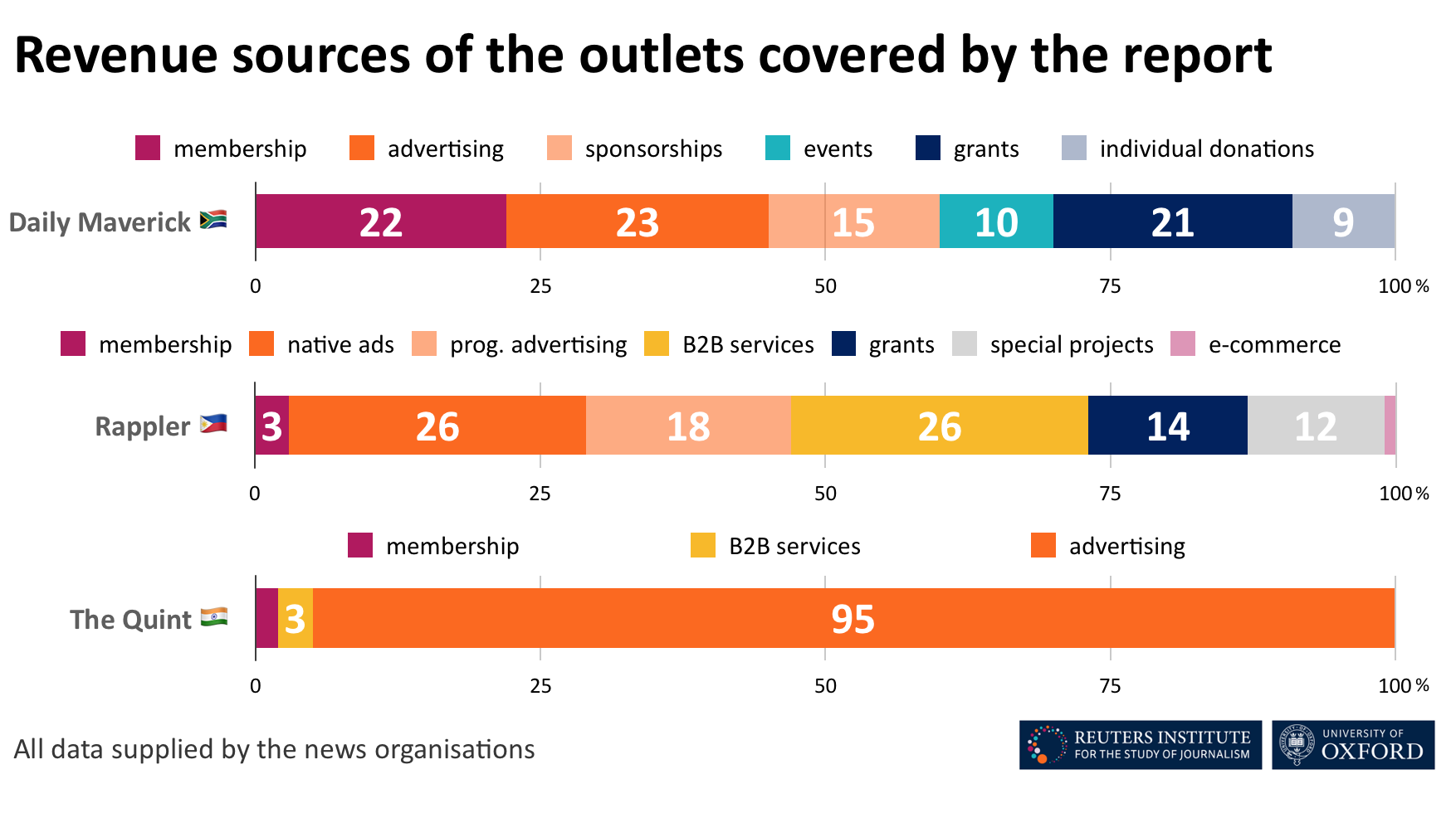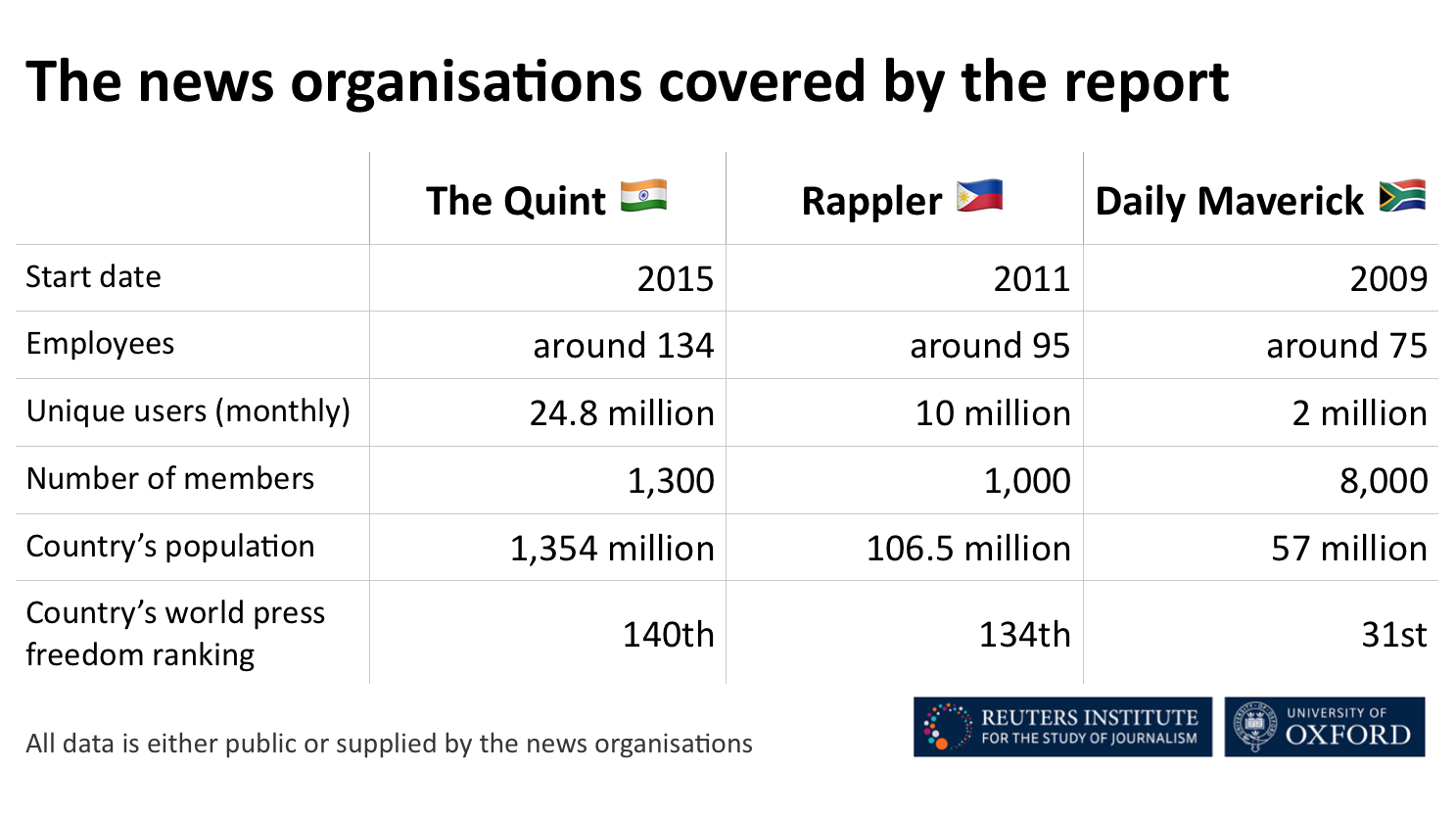How three news organisations are rebooting audience engagement to fight online toxicity and political attacks

Digital-born news organisations in the Global South are retreating from engaging audiences at-scale through open social media channels, and they are focusing instead on building “narrower, stronger, and deeper” relationships with their audiences. This shift comes in response to mounting political pressures —including targeted, orchestrated attacks on their operations and journalists— and rising audience toxicity. As a result, they’re emphasising acts of civic engagement designed to prompt community action, offline events, new technological solutions, and membership programmes over the pursuit of pure volume and empty reach.
These are the main conclusions of a new report published by the Reuters Institute for the Study of Journalism with the support of the Facebook Journalism Project. The report features three news organisations: Daily Maverick in South Africa, The Quint in India and Rappler in the Philippines. Its findings are based on the work of its lead author, Julie Posetti, who was embedded for a week in each of these newsrooms and conducted 45 in-depth interviews. She was also added to agenda-setting diaries, editorial email lists and internal discussion groups, while closely observing and participating in newsroom processes. Additionally, the findings draw on a series of follow-up interviews by Posetti and co-authors Felix Simon and Nabeelah Shabbir with editors, CEOs and others working on audience engagement at the outlets.
Key findings from the report
The report shows how these outlets, two of which (Rappler and The Quint) were born as Facebook pages, are now actively responding to ‘platform capture’: a combination of the manipulation of the big technology companies and their user base for malicious purposes, the over-reliance of some news organisations on these companies for engagement and distribution, and the encouragement of such dependency by the platforms themselves, which have frequently changing priorities for distribution and engagement. Here are some key findings from the report:
-
Scale can break communities, especially when combined with attacks from malicious political actors. These attacks are frequently sexualised and often target female journalists, who are exposed to significant health, safety, and security risks. The attacks can also be damaging to their online communities, impacting significantly on ‘engagement work’.
-
Once weaponised at scale, audiences can’t be recalibrated at scale through the same channels. News organisations can still engage their audiences in a more controlled environment. Deeper, narrower, and stronger is key: smaller audiences properly engaged can still play a significant role through collaboration, distribution, and impact.
-
Some audience engagement evolutions have come full circle. Rappler was built around so-called ‘communities of action’ generated through social media channels. With Rappler under attack, those communities now thrive offline through events and community activism, helping to defend the outlet against the government of Rodrigo Duterte.
-
Changes in the products and priorities of technology platforms have unintended consequences for the work of news organisations. After WhatsApp updated its terms and conditions to fight against disinformation, The Quint was forced to transition a huge audience from its WhatsApp channel to Telegram, a less popular messaging app. Most people on that channel have not yet made the switch.
-
The three organisations studied have recently started membership programmes. The most successful (and the oldest) is the one started by Daily Maverick, the outlet that never fully embraced social media and focused on offline engagement and closed online interactions driven by personalised newsletters instead. Memberships will account for 22% of Daily Maverick’s revenue in 2019. Rappler and The Quint haven’t mirrored this success yet.

This report is the final installment of the Journalism Innovation Project, whose goal was to identify key indicators for ‘sustainable’ journalism innovation through the study of international news organisations working hard on the problem across a range of dimensions:
-
The first report from the project argued that the news industry had become too obsessed with technology-led innovation in the absence of clear, research-based strategies, and suggested a need to avoid ‘Shiny Things Syndrome’ while responding innovatively to existential crises.
-
The second report focused on how three news organisations were combating disinformation through innovative, mission-driven, audience-centred journalism in the Global South —in the service of both democracy and their communities.
-
This third report focuses on the same trio of news organisations and covers the creative evolution of their audience engagement strategies and practices as they face hostile financial and political environments.
Why these news organisations?
The Quint, Daily Maverick and Rappler are digital-born commercial news organisations. All of them are committed to journalism’s democratic mission through independent reporting and civic action while aiming for profitability in markets with very high rates of mobile and social media penetration. All are national publications making an impact internationally through multi-award winning public interest reporting in countries where journalism and democracy are under fire.

Dr. Julie Posetti, lead researcher and author of the report, said: “We hope these news organisations’ experiences, trials, mistakes and learning help guide news organisations globally, as the ‘breakage’ of online communities caused by the manipulation and ‘weaponisation’ of audiences —at scale— is ‘ported’ to the West.” A point emphasised by Rappler CEO Maria Ressa, who says: “We are democracy’s dystopian future.”





